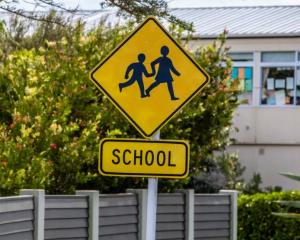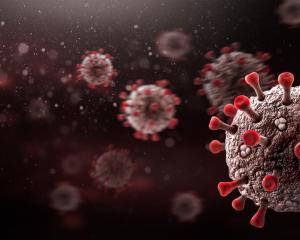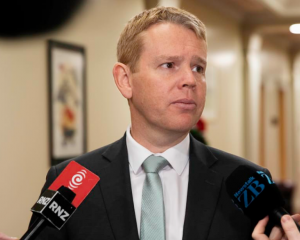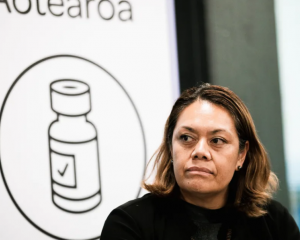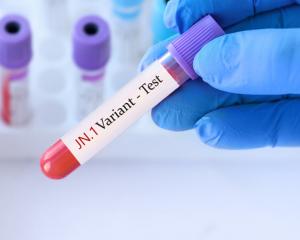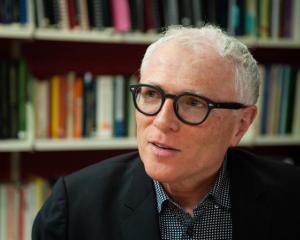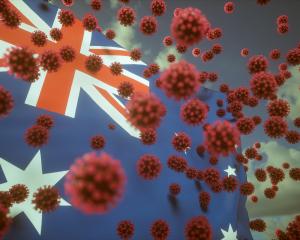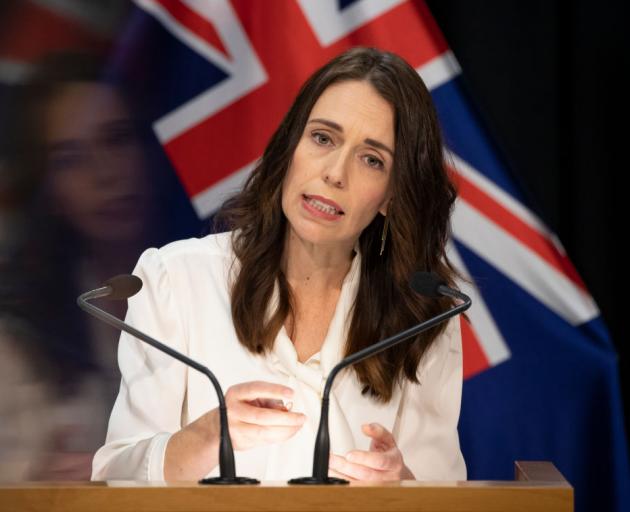
If there is another outbreak of Covid-19 in New Zealand separate regions would be moved up alert levels to try contain it.
The Covid-19 response framework was announced by Prime Minister Jacinda Ardern this morning.
"It is designed to give the public, and our business community as much certainty as we can around what to expect if new cases inside our borders are found. And that is something we all must prepare for."
Speaking to media at Parliament this morning, Ardern said her plan was based on evidence she has seen from around the world.
"We must plan for any eventuality," she said.
The Government would move at a local, or regional level if there was a new outbreak.
Police would be the "first port of call" in terms of enforcement.
Ardern said the Covid-19 situation has changed since it first arrived in New Zealand, with "scattered" instances of Covid-19 arriving in the country.
The most likely instance going forward would be seeing much more isolated cases.
Ardern would not rule out going back to level 4, nationwide.
But the focus would be acting locally before a nationwide lockdown was implemented.
Ardern said the relevant agencies would be called on to create regional borders.
That could mean roadblocks, depending on what alert level a regions was subject to.
"The whole point of a regional [lockdown] is containment."
She said there would be flexibility, depending on what the outbreak looks like.
In terms of what the "regions" would look like, Ardern said in could be a number of things.
For example, she pointed to examples overseas where individual apartments buildings have been locked down.
But it could be a town, or even a suburb.
Asked about how much notice these regions would get, Ardern said she has been working with agencies about this detail.
But she said the Government couldn't go much longer than 24-48 hours.
PM on prospect of travel bubbles
The border continued to pose the greatest risk and there was still no timeline on reopening them to people from overseas.
Ardern said her main priority was the safety of New Zealanders.
On the prospect of a travel bubble with the Cook Islands, Ardern said she had asked officials to look at border movements with New Zealand's realm countries (the Cook Islands and Niue).
Ardern said she and her Australian counterpart Scott Morrison had not changed their position on a transtasman bubble - it would only be considered when it would be safe to do so.
When it came to Covid-19 tracking, there was an element of personal responsibility required.
Health Minister Chris Hipkins said the Government's Covid-19 tracer app was about people owning their own data.
Asked if the Government would be spending more money on promoting the contact tracing app, Ardern said yes and that she would have more to say about that soon.
In the meantime she had a message for businesses: "Put up the [Covid tracker app] poster."
Covid cases continue overseas
Ardern said the pandemic was growing overseas while areas that had it under control like Victoria, New South Wales, Hong Kong, Singapore and Korea were experiencing resurgences of the virus.
New modelling showed there will be over 100,000 new cases a day in the US by the end of the month, nearly 70,000 cases a day in India and nearly 10,000 cases a day across Europe by early August.
"We will continue to welcome home New Zealanders from these places as citizens, as they have a right to come home to their legal place of residence," Ardern said.
"But with that right comes risk, and the need to continue ongoing stringent measures to keep them, and everyone around them, safe.
"Victoria in particular is a cautionary tale for New Zealand that we must learn from.
"It appears their current outbreak is linked to a managed isolation facility similar to the ones we run here and that the entire outbreak was seeded by just two cases."
Ardern said that showed how quickly the virus could spread and move from being "under control to out of control".
And despite New Zealand's border regime serving us well so far, there was limited room for error, said Ardern.
"Experts tell us that even with the best precautions possible, the chances of the virus passing from a surface, or contact with someone who is a carrier are high.
"We must prepare now for that eventuality and have a plan at the ready in the event that it does."
Ardern said Housing Minister Megan Woods and Air Commodore Darryn Webb had made significant additional improvements to the border regime and she'd spoken to Australian Prime Minister Scott Morrison to share insights on any more they could do.
"But again, no system is 100 per cent fool proof and around the world we are seeing even the most rigorous measures being tested by the virus."
The Covid-19 response strategy
New Zealand will stay on an elimination strategy.
"So in the event of new community cases we would move immediately to implement our 'Stamp it Out' approach again," said Ardern.
A key to that would be Kiwis maintaining good hygiene measures and efficient contact tracing.
"In this area we are constantly looking at how we can use new technology to strengthen our response, the same goes for testing."
But if there was a community outbreak, the Government would move to different alert levels in different regions.
"Our priority will be to control any cases with the least intrusive measures, and over the smallest area we can.
"In practical terms that means doing absolutely everything possible to avoid the entire country returning to Alert Levels 3 or 4 as a measure of last resort."
There are three broad starting scenarios:
• 1. A case or a number of cases in a community.
• 2. A larger number of cases or cluster in a region
• 3. Multiple clusters that have spread nationally
The first example is if there is a contained case or cases within a community.
"We would be looking at applying strong restrictions but only applied locally in a neighbourhood, town or city to contain the virus and stopping it spread."
But New Zealand would likely remain at alert level 1 nationally.
"The local measures to contain the case would involve rapid contact tracing and isolation of cases and their contacts, scaled up and targeted testing of people connected to the case, such as workmates, those they live with or those in their neighbourhood."
The second scenario is a large cluster within a region.
"Here, a significant increase in testing would be the priority. We would look to undertake much wider community testing, on top of testing any contacts or potential contact of those with the virus. This could look like it did in Victoria where health staff went door to door to test people in affected areas.
"We would also take steps to stop the spread to other parts of the country so a regional shift in Alert Level would likely be applied that restricted travel. This would mean travel in or out of the city, town or region could be stopped, people in that place asked to work from home, and local restrictions on gatherings implemented.
"The aim here is to contain the spread away from other areas to avoid the whole country having to put in place restrictions so we can remain at alert level 1 nationally, depending on the evidence of risk of spread outside the region."
The final scenario is if multiple clusters are spread around the country.
"In this scenario we would most likely apply a nationwide increase in Alert Level to stop transmission.
"There is an assumption in all of these scenarios that we know whether we have a contained outbreak or not. Where we don't have full information, we will take a precautionary approach, and scale back as needed, rather than run the risk of doing too little too late.
"Ultimately though, as with the original application of the Alert Levels we will be guided by science and what we know works. Internationally the evidence remains that going hard and early is the best way to stop the virus and ultimately delivers the best results for human health and the economy over half measures that aren't as effective at getting on top of the virus and sees us in lockdown for longer," Ardern said.
"We have learnt much from the first wave at stopping the chain of transmission and eliminating community transmission.
"We learnt if we act fast we can stop the virus spreading."
Ardern said "no one wants to go backwards but the reality is our fight against the virus is not over and we must have a plan at the ready to protect our current position if it comes back".
Yesterday there was one new case of Covid-19 in a managed isolation facility.
The woman, who arrived from Pakistan, tested positive on day 12 of her stay in isolation in Christchurch.
Comments
Jacinda playing the covid scare deflection card again. Is deflecting all she can do in answer to a new National Party leader --- Well sorry Jacinda your covid scare deflection card has been previously played out and now trumped...
You have no idea what you are talking about! I live (exist) in Melbourne and we have now gone back down into full lock down because the state government didn't do enough to control covid. You have no idea how lucky NZ is.


